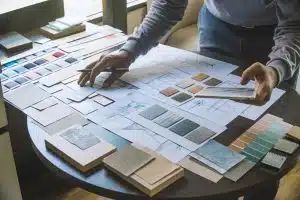Discover the Best Industrial Design Schools in the US
Industrial design is a creative discipline that has shaped our world in countless ways. From the smartphones that are our constant companions to the furniture that fills our homes, industrial design plays a part in creating most of the products we use every day. Choosing the right school to study industrial design can set the path for a successful career in this fascinating industry.
Understanding Industrial Design
The Role of Industrial Design in Today’s World
Industrial design brings together art, business, and engineering to create functional, aesthetically pleasing, and innovative products. The goal of industrial design is not only to create beautiful items but also to improve the consumer’s experience and the product’s effectiveness. Industrial designers take into consideration aspects like ergonomics, usability, and sustainability.
In an increasingly customer-centric world, the industrial designer’s role is more critical than ever. As businesses strive to create products that stand out in a crowded market, professionals with expertise in industrial design are in high demand.
Industrial designers play a crucial role in shaping how we interact with products. They carefully analyze user needs and preferences to create designs that are not only visually appealing but also intuitive to use. By considering factors such as ergonomics, industrial designers ensure that products are comfortable and easy to handle, enhancing the overall user experience.
Moreover, industrial designers are at the forefront of sustainable design practices. They explore innovative materials and manufacturing processes that minimize environmental impact. By incorporating sustainable design principles, industrial designers contribute to the development of eco-friendly products that promote a greener future.
Key Skills for Aspiring Industrial Designers
To become a successful industrial designer, you will need to develop a range of skills. Creative problem-solving skills are essential, as the aim of industrial design is to solve design problems and improve user satisfaction. You also need strong visual communication skills, an understanding of materials and processes, and proficiency in design software.
Additionally, strong collaboration skills are also beneficial. Industrial designers often work in teams and must be able to communicate their ideas effectively to engineers, manufacturers, and stakeholders.
Industrial designers are constantly pushing the boundaries of innovation. They stay up-to-date with the latest advancements in technology and materials to create cutting-edge designs. By embracing emerging technologies such as 3D printing and virtual reality, industrial designers are able to visualize and prototype their ideas more efficiently, leading to faster product development cycles.
Furthermore, a deep understanding of consumer psychology is crucial for industrial designers. By studying consumer behavior and preferences, designers can create products that resonate with their target audience. This involves conducting market research, analyzing trends, and staying connected with consumers’ ever-evolving needs and desires.
Overall, industrial design is a multidisciplinary field that combines creativity, problem-solving, and technical skills to create products that improve our lives. From enhancing user experiences to promoting sustainability, industrial designers play a vital role in shaping the future of product design. Aspiring industrial designers must continuously develop their skills and stay abreast of industry trends to thrive in this dynamic and exciting field.
Criteria for Choosing an Industrial Design School
Accreditation and Reputation
An essential criterion for selecting an industrial design school is its accreditation status. Accreditation guarantees that a school has met specific standards of quality. It ensures that the curriculum, faculty, and facilities are up to par with industry standards. When a school is accredited, it means that it has undergone a rigorous evaluation process conducted by an external accrediting body.
Moreover, the school’s reputation can significantly impact your future job prospects. An alma mater revered in the industry can open doors to coveted internships and job opportunities. Employers often value graduates from reputable schools, as they are confident in the quality of education and training they receive.
When researching industrial design schools, take the time to explore their accreditation status and reputation within the design community. Look for schools that have a strong track record of producing successful graduates who have made significant contributions to the field.
Curriculum and Specializations
The curriculum offered by a school indicates the knowledge and skills you are likely to acquire during your studies. A comprehensive curriculum that covers a wide range of subjects is essential for a well-rounded education in industrial design.
Look for schools that offer courses in foundational design principles, sketching and rendering techniques, computer-aided design (CAD), materials and manufacturing processes, and design thinking methodologies. A robust curriculum will provide you with a solid foundation in industrial design’s artistic and technical aspects.
Additionally, consider if the school offers any specializations that may align with your career goals. Specializations can provide you with in-depth knowledge and expertise in specific areas of industrial design, such as furniture design, automotive design, or product innovation. A specialization can set you apart from other graduates and make you more marketable in your chosen field.
Faculty and Student Support
In industrial design, mentoring by experienced faculty can be instrumental in shaping your career. When researching potential schools, take the time to review the credentials of the faculty members. Look for faculty who have extensive industry experience, as they can provide valuable insights and connections.
Additionally, consider the faculty’s areas of research and expertise. Are they actively involved in the design community? Do they have a strong network of industry professionals? Faculty members who are engaged in ongoing research and professional development can bring the latest industry trends and practices into the classroom.
Furthermore, student support services can significantly enhance your professional development. Look for schools that offer career placement assistance, internship opportunities, and networking events. These resources can help you gain real-world experience, build a professional network, and increase your chances of securing employment after graduation.
Remember, choosing an industrial design school is a significant decision that will shape your future career. Review each criterion thoroughly to ensure you select a school that aligns with your goals and aspirations.
Overview of Top Industrial Design Schools in the US
When it comes to pursuing a career in industrial design, choosing the right school can make all the difference. The United States is home to some of the world’s most prestigious and innovative design schools.
Drexel University
Drexel University offers a comprehensive program that prepares students for careers in various fields, such as toy manufacturing, medical tool development, or entrepreneurship. If this resonates with your aspirations, delve deeper.
The production design major at Drexel, housed in the Westphal College of Media, allows students to immerse themselves in a studio environment. While students are motivated to take ownership of their learning, the curriculum maintains its core focus on teaching the principles of design.
In addition to foundational courses like applied design visualization and computer-aided imagery in product design, Drexel University offers advanced electives, including design for soft products and toy play design.
San Jose State University
For over three decades, San Jose State University’s industrial design school has equipped students with the resources needed to bring their designs to fruition, thanks to the university’s unwavering commitment. The recent senior design display overview indicates the institution’s ongoing commitment to excellence.
The recent graduates are a testament to innovation and practicality, with standout projects ranging from custom electrotherapy solutions to novel takes on the traditional walking cane. The displayed projects embody the school’s mission: addressing humanity’s evolving needs and solving pressing challenges.
Arizona State University
A thriving industrial design school offers students myriad opportunities to harness their creativity but also requires faculty with extensive industry experience. At Arizona State University’s Design School, students benefit from instructors who bring a wealth of knowledge. One noteworthy faculty member, Associate Professor Lauren McDermott, has a distinguished background in designing corporate and domestic furniture.
University of Notre Dame
While the term “industrial design” might evoke mechanical undertones, the field is deeply rooted in understanding human interactions with technology. The University of Notre Dame recognizes this philosophy, integrating it into all its academic programs. A standout initiative is the Max & Emma lecture series, named in honor of late professor Rich Jensen’s cat. This series gives design students insights from leading industry professionals, emphasizing the importance of human-centric design.
Virginia Tech
Students need creativity, curiosity, and empathy to excel in industrial design. But they also require the right environment and resources. Virginia Tech’s program in industrial design, located within the School of Architecture and Design, seamlessly combines these elements.
At Burchard Hall, students have access to comprehensive facilities for working with diverse materials alongside photography darkrooms, print-making supplies, and more. The computer labs are equipped with top-notch printers, scanners, and 3-D prototyping tools.
University of Illinois at Urbana Champaign
Every creative mind occasionally seeks inspiration. The University of Illinois at Urbana-Champaign’s industrial design department offers students an expansive array of resources.
The Ricker Library of Architecture and Art is housed within the same building, granting students access to scholarly publications, plans, books, and more. Such resources empower future designers to stay updated and position their work alongside leading innovators.
Rhode Island School of Design (RISD)
Given its longstanding reputation in art and design, RISD’s top-ranking position is well-deserved. Esteemed designers affiliated with RISD are keen to impart their knowledge to budding designers. For instance, Professor Nichols, with a rich portfolio that includes roles like lead product designer at Hasbro Toys, draws upon his extensive industry experience when mentoring students.
Purdue University
To grasp the caliber of Purdue University’s Bachelor of Fine Arts degree in Industrial Design, one only needs to visit the undergraduate student gallery. Highlights include innovative designs like a compact showerhead for women and a portable single-person kayak.
Students benefit from resources at the Yue Kong Pao Hall of Visual and Performing Arts, from personal design studios to advanced tech tools like CNC rapid prototyping and software like Solidworks and Keyshot.
Carnegie Mellon University School of Design
Carnegie Mellon University’s School of Design’s confidence in its students is evident; they collaborated with students to design their new logo. A testament to their prowess, several sophomores were invited to present at the Relating Systems Thinking & Design Symposium (RSD10) at Delft University of Technology.
Georgia Institute of Technology School of Industrial Design
Technology is the cornerstone of the School of Industrial Design at Georgia Tech. Students are equipped to bring their visions to life, courtesy of the school’s cutting-edge design technology.
Research centers at the Institute consistently emphasize tech innovations. For instance, collaborations at the Center for Inclusive Design and Innovation focus on creating groundbreaking, user-centric solutions for individuals with disabilities.
Choosing the right industrial design school is an important decision that can shape your future career. Whether you aspire to work for a renowned design firm or start your own design studio, these top industrial design schools in the US offer exceptional programs that will equip you with the skills and knowledge needed to succeed in the competitive design industry.
Exploring the Industrial Design Career Landscape
The field of industrial design offers a diverse range of opportunities for creative individuals passionate about designing products that improve people’s lives. From creating innovative user interfaces to designing sustainable furniture, industrial designers play a crucial role in shaping the world.
Job Prospects for Industrial Design Graduates
According to the US Bureau of Labor Statistics, the future looks promising for industrial design professionals. With the continuous advancements in technology and the growing emphasis on user experience, the demand for skilled industrial designers is expected to increase steadily in the coming years.
Industrial design graduates possess a unique skill set that allows them to excel in various career paths. They can work as product designers, responsible for creating aesthetically pleasing and functional products that meet the needs of consumers. Alternatively, they can pursue a career as UX/UI designers, focusing on designing intuitive and user-friendly interfaces for digital products.
In addition to these roles, industrial design graduates can also explore opportunities as furniture designers, where they can combine their creativity with functionality to create beautiful and ergonomic pieces. On the other hand, design managers oversee the entire design process, ensuring that projects are executed smoothly and efficiently.
Emerging Trends in Industrial Design
The industrial design industry is constantly evolving adapting to economic, environmental, and social changes. One of the significant trends shaping the field is the increasing focus on sustainability and social impact. Designers are now more conscious of the environmental footprint of their creations, striving to develop eco-friendly products that promote a more sustainable future.
Another exciting trend in industrial design is the integration of digital technology into everyday products. With the rise of the Internet of Things (IoT), designers have the opportunity to create smart and connected products that enhance people’s lives. The possibilities for innovation are endless, from smart home devices to wearable technology.
Furthermore, the growing emphasis on user experience is driving the demand for designers who deeply understand human behavior and design thinking. Companies recognize the importance of creating products that look good and provide a seamless and enjoyable user experience. Industrial designers who can bridge the gap between aesthetics and functionality are highly sought after in today’s competitive market.
The industrial design career landscape offers creative individuals a wide range of opportunities. With the projected growth in the industry and the emergence of exciting trends, industrial design graduates can look forward to a fulfilling and dynamic career that allows them to make a tangible impact on the world.
Financing Your Industrial Design Education
Scholarships and Grants for Industrial Design Students
Financing an education can be challenging, but numerous scholarships and grants are available for aspiring industrial designers. These can come from various sources, including the school, private foundations, and government agencies.
Be sure to explore all your options and apply early, as competition can be high for these awards.
Student Loans and Repayment Options
If scholarships and grants are not an option or not enough, student loans can help finance your education. Many federal loans come with income-driven repayment plans, which can make paying them back more manageable.
However, it’s essential to be realistic about the cost and your future earning potential in industrial design. Always borrow responsibly and understand the terms of your loan agreement.
In conclusion, choosing the right school is a critical step in embarking on a successful industrial design career. You can find a program that aligns with your personal and professional goals by considering factors like accreditation, reputation, curriculum, faculty, and financial aid.
If you need help putting the finishing touches on your college applications, at AdmissionSight, we have over 10 years of experience guiding students through the competitive admissions process.
AdmissionSight can help you put your best foot forward when applying to college this fall. Contact us today for more information on our services.








































